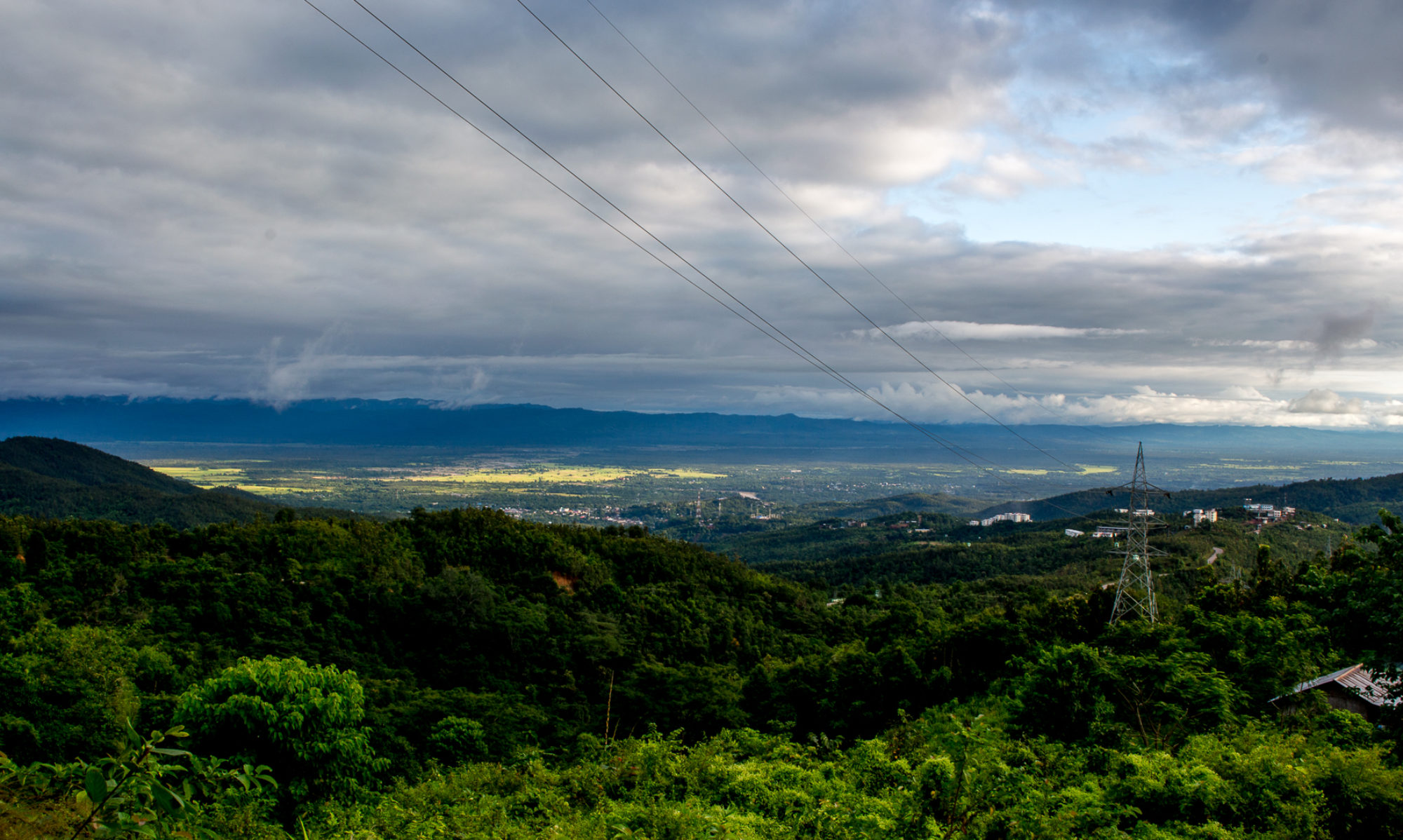It was a sunny day and we started early in the morning and were soon heading towards the Damnoen Saduak floating market which is located approximately 100 km from Bangkok, in the Ratchaburi province. Remember James Bond’s iconic boat chase scene in ‘The Man with the Golden Gun’ with our heartthrob Roger Moore looking exceptionally dapper against the swirling waters? Yes! That’s the place we were going to visit.
While floating markets are important features in countries with river-centric economy, the concept has made tourism news in south-east Asian countries like Thailand, Malaysia, Vietnam, Bangladesh, Sri Lanka, among others.
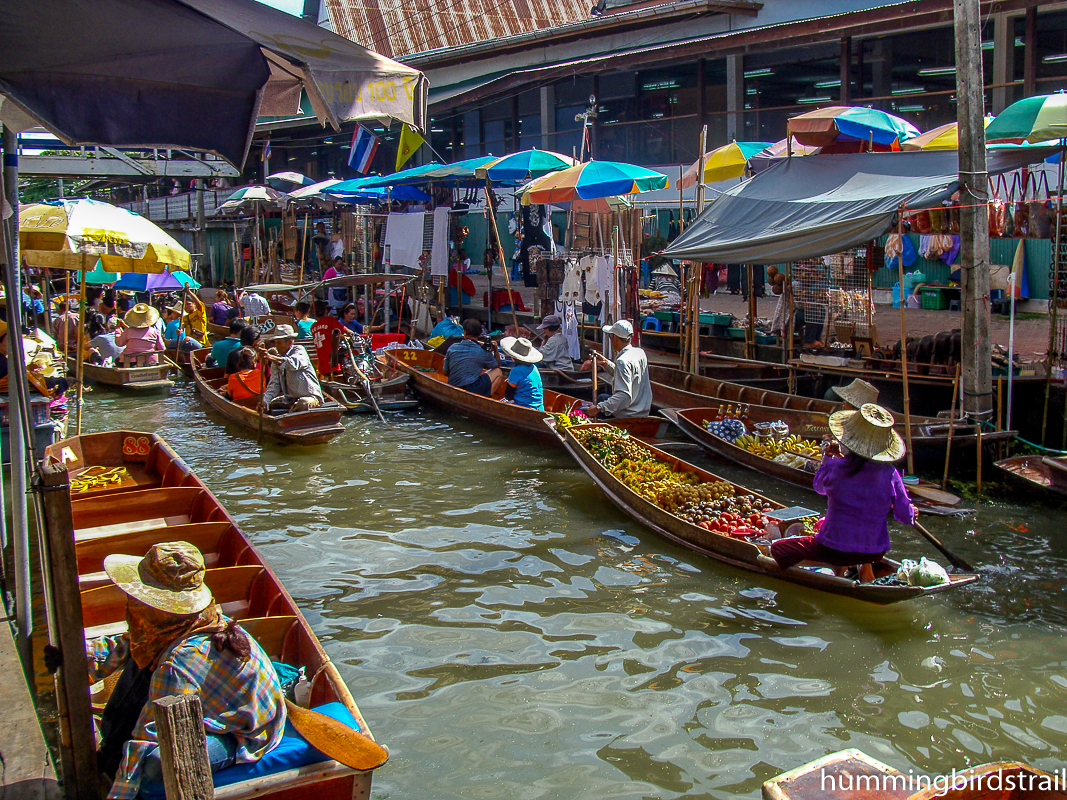
The Damnoen canals were dug between 1866 to 1868 connecting the rivers, Mae Klong and Tha Chin. Later the network of canals grew with nearby villagers digging many more, and a number of floating markets cropped up. But, as with many other things, technology took a major toll on them, fading away most into obscurity. The Damonen Saduak Floating market, in spite of having lost its place in the daily lives of the people, has thankfully survived this ordeal by gaining tourist attention.
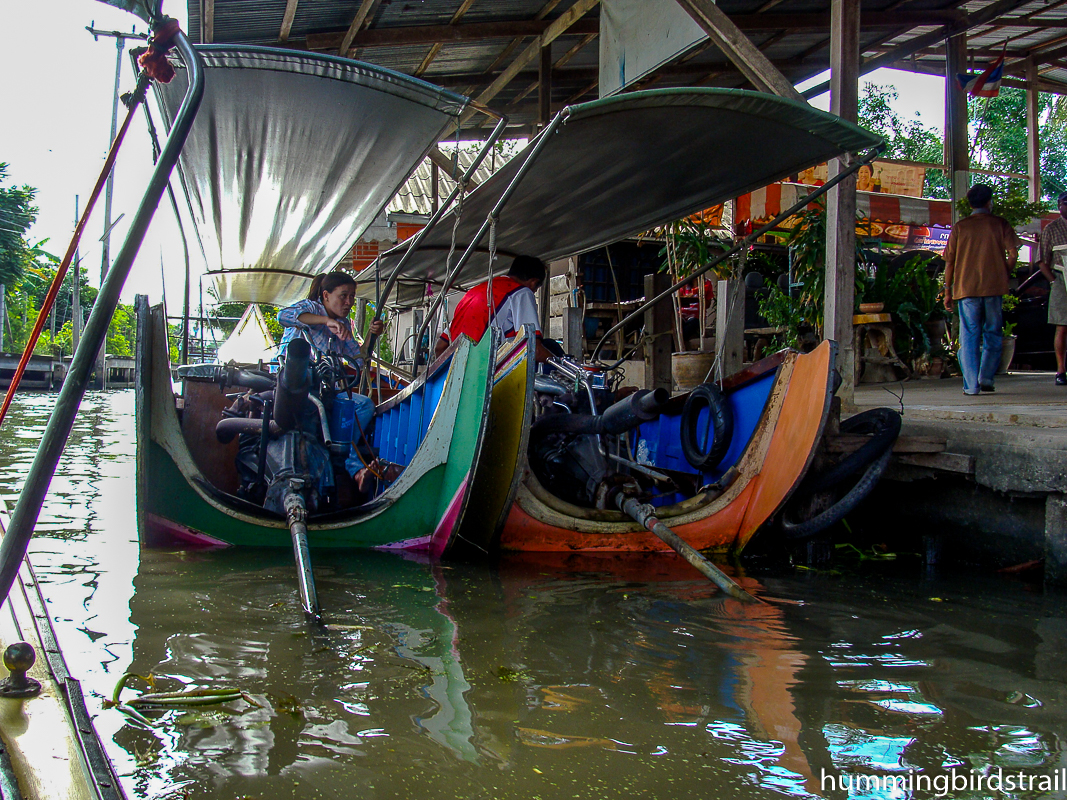
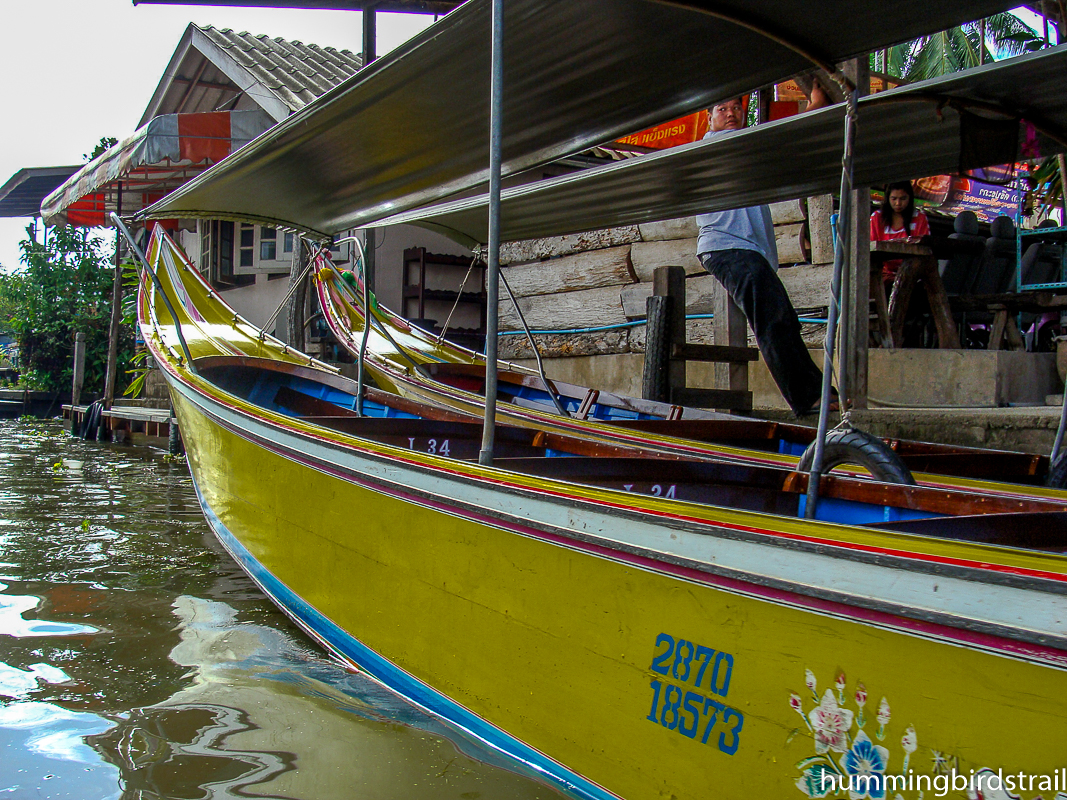
We touched the scene at around 09:00 am and hired a long-tailed boat which charged us approx 1000 Thai Baht per person. Incidentally, we shared our ride with another couple from Salzburg, who went on to become dear friends!
As the boat made way through the murky canals, we couldn’t help but notice how it was wobbling around precariously.
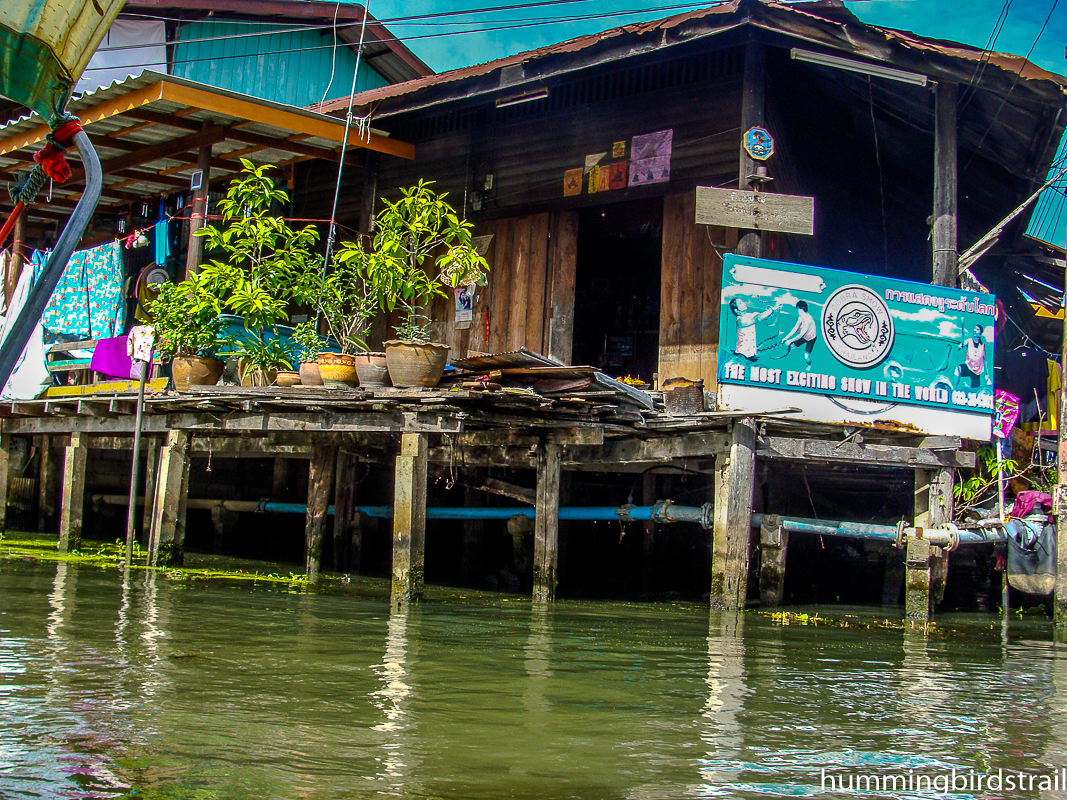
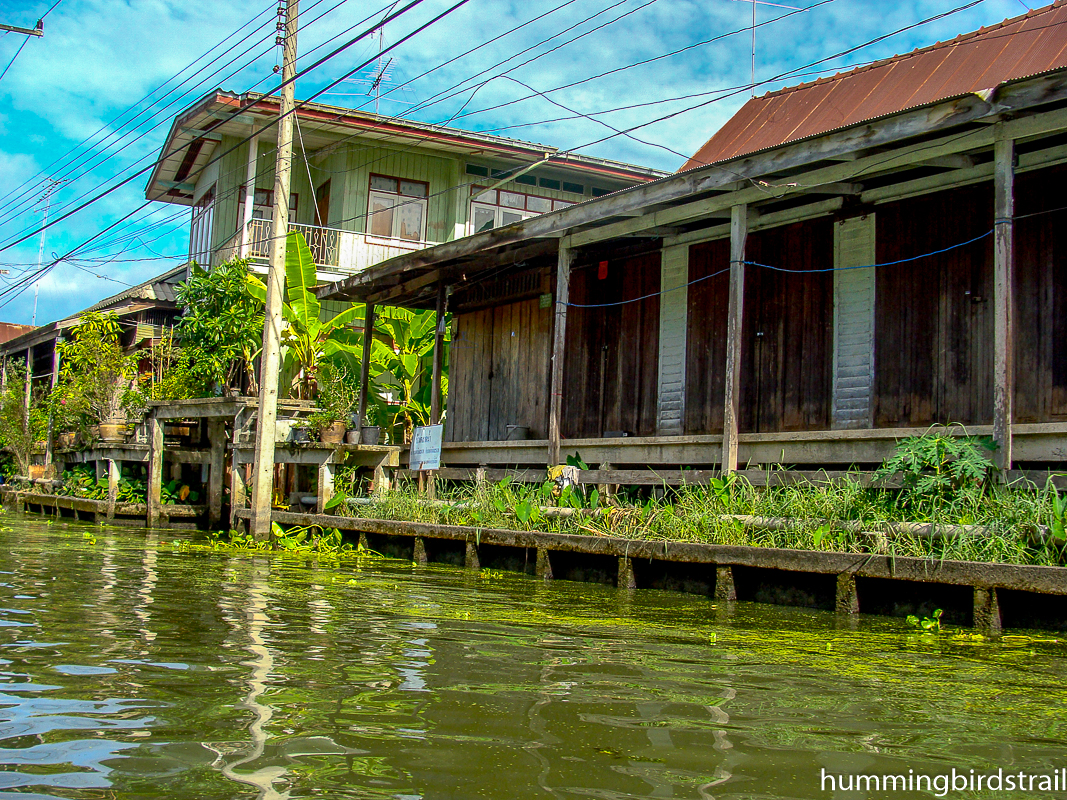
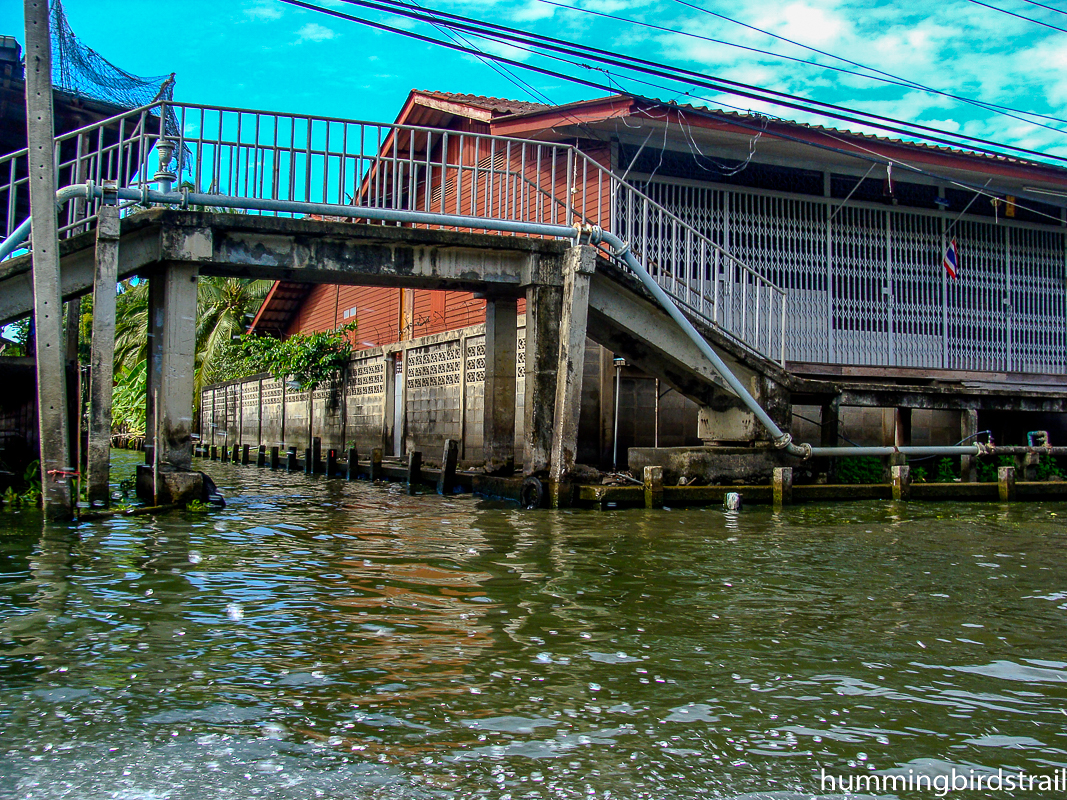
But soon enough, beautiful distractions tore away our veil of anxiety. There were women vendors donning the traditional Mo Hom(s) (Mo means pot and Hom refers to Indigo plant, and it is basically T shirt with buttons or tie ropes) and Ngob(s) which are basically wide brimmed straw hats.
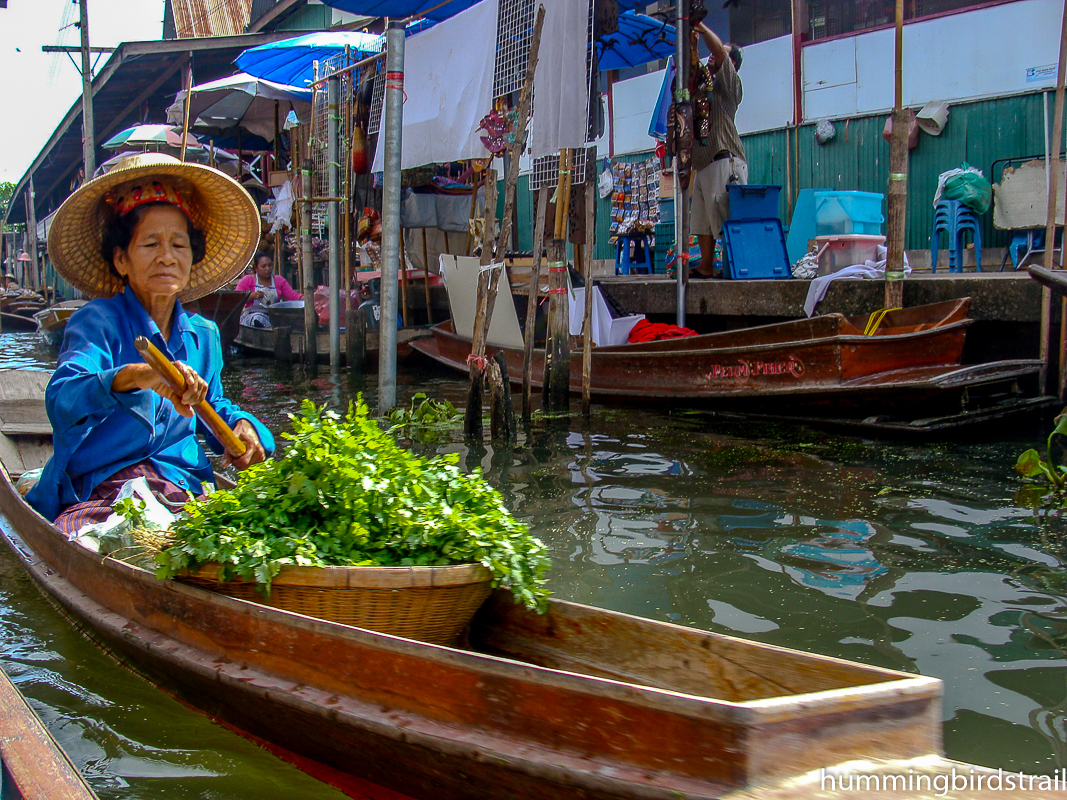
There were a plethora of products for sale, like fresh vegetables, fishes, handicraft, coconuts, bananas, all loaded onto Sampan(s) which are small wooden boats that the vendors predominantly use.
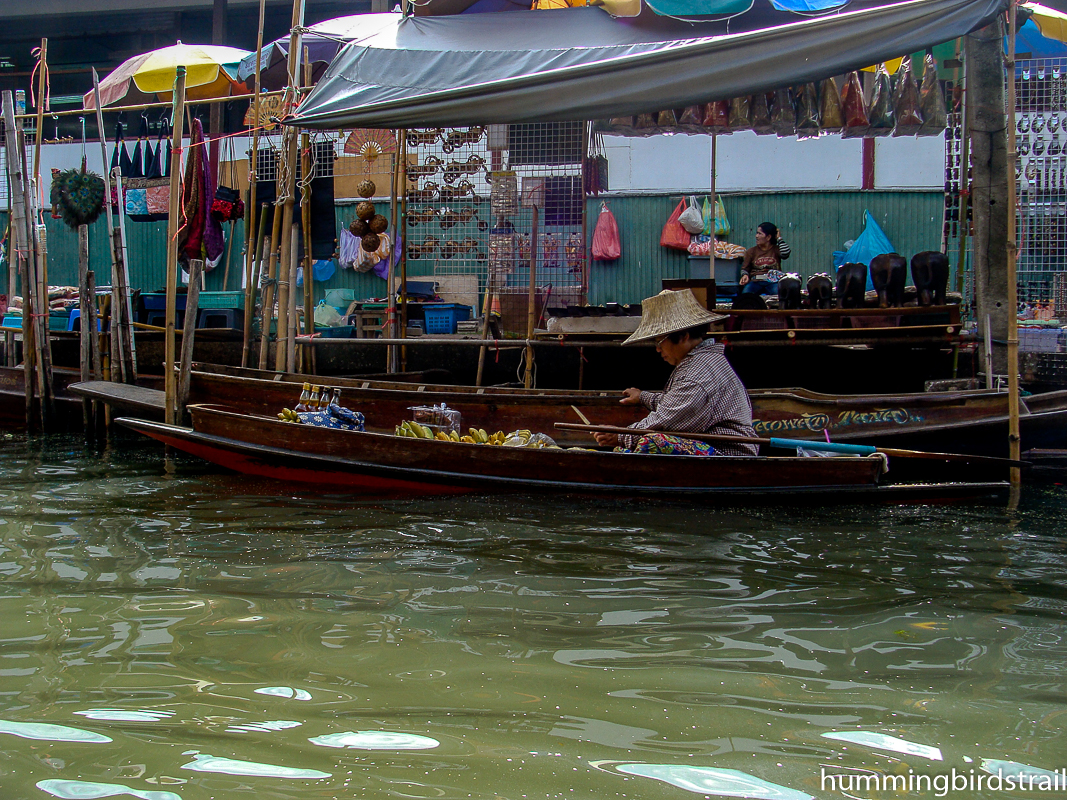
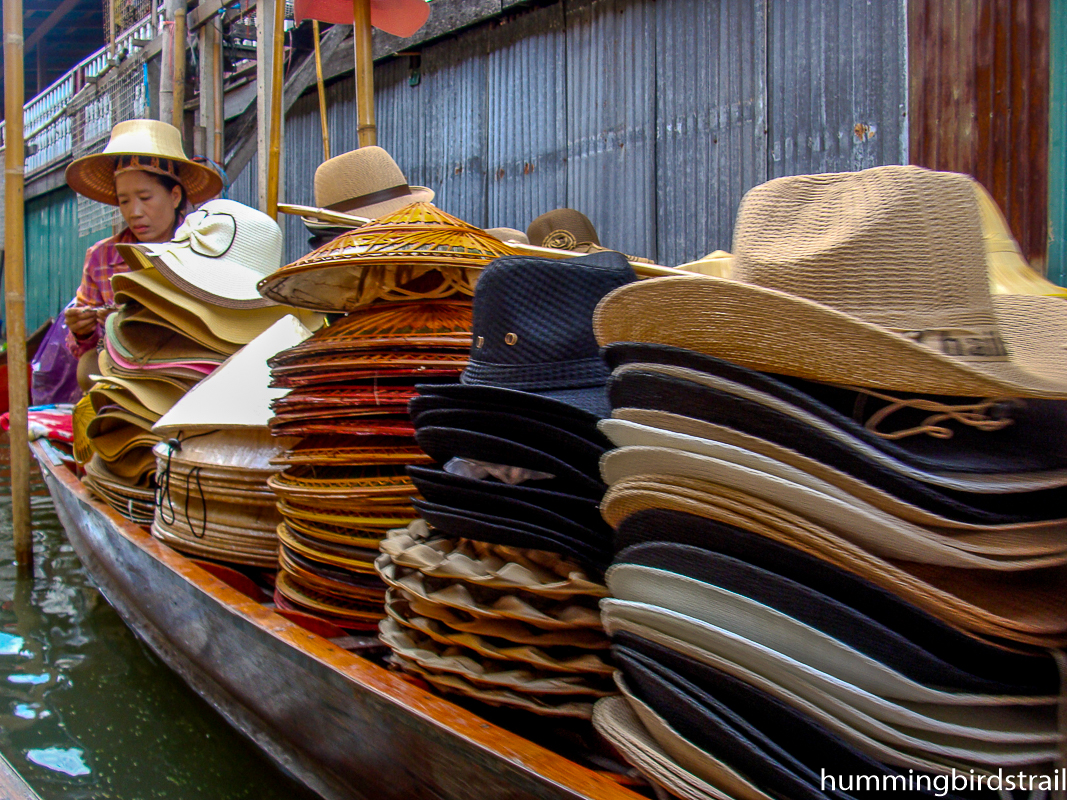
We had already seen a huge traffic jam on the canals, as soon as we arrived. The place was vibrant with tourists and was buzzing with the jovial haggling going on between prospective customers and the sellers. The options of enjoying noodle soups, coconut ice-creams, fresh fruits among other things, was adding to the excitement.
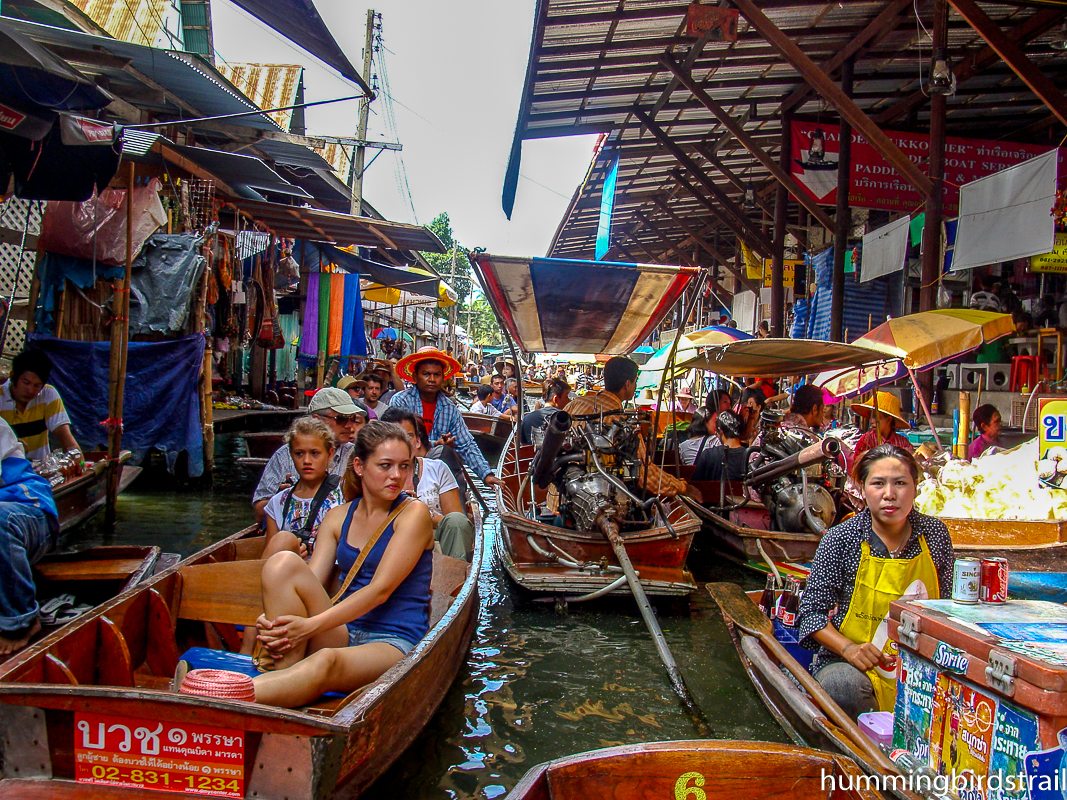
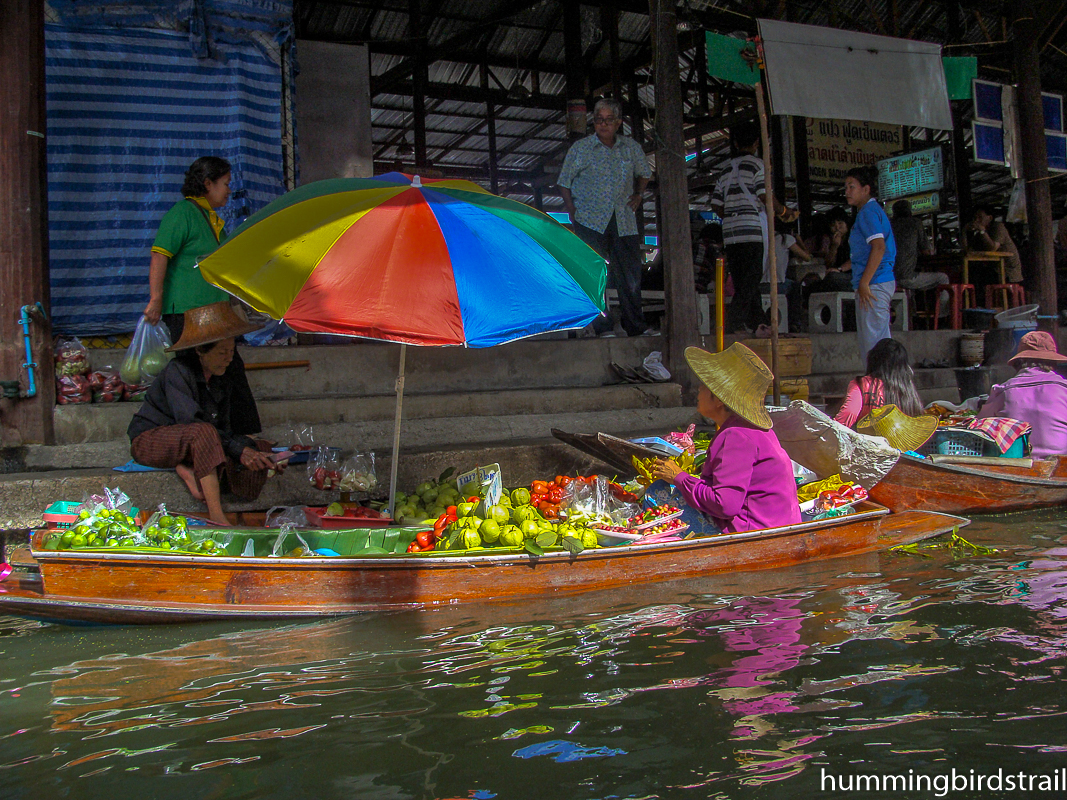
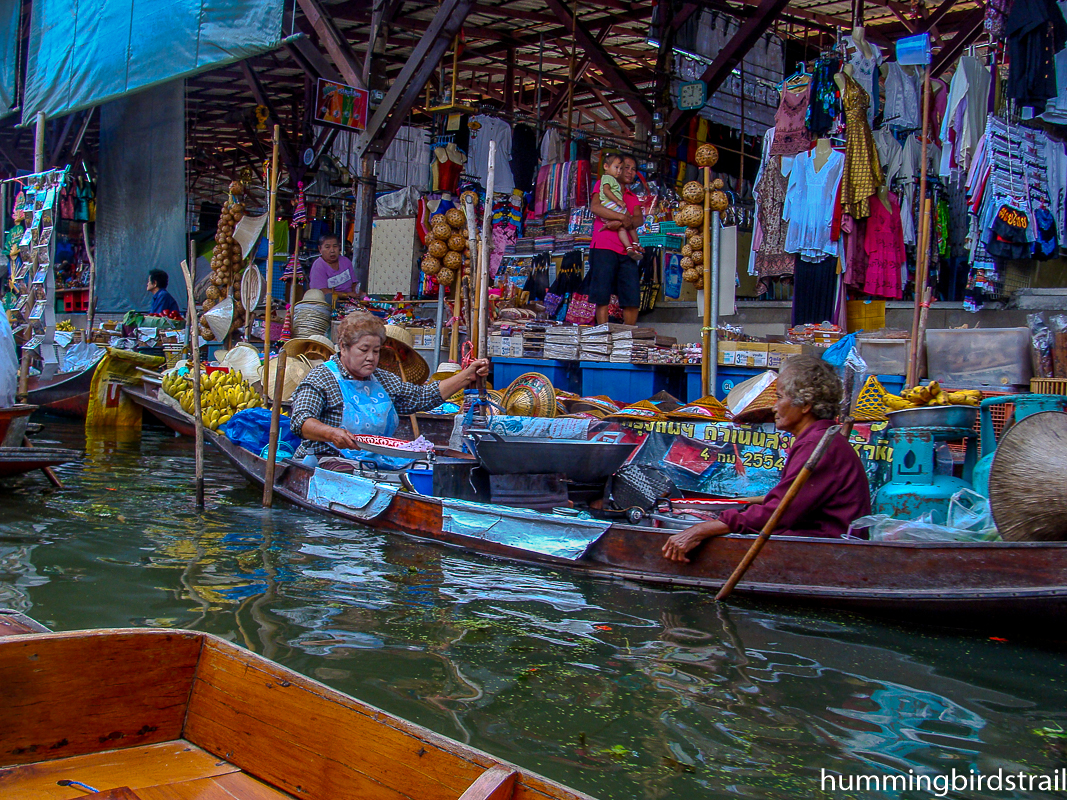
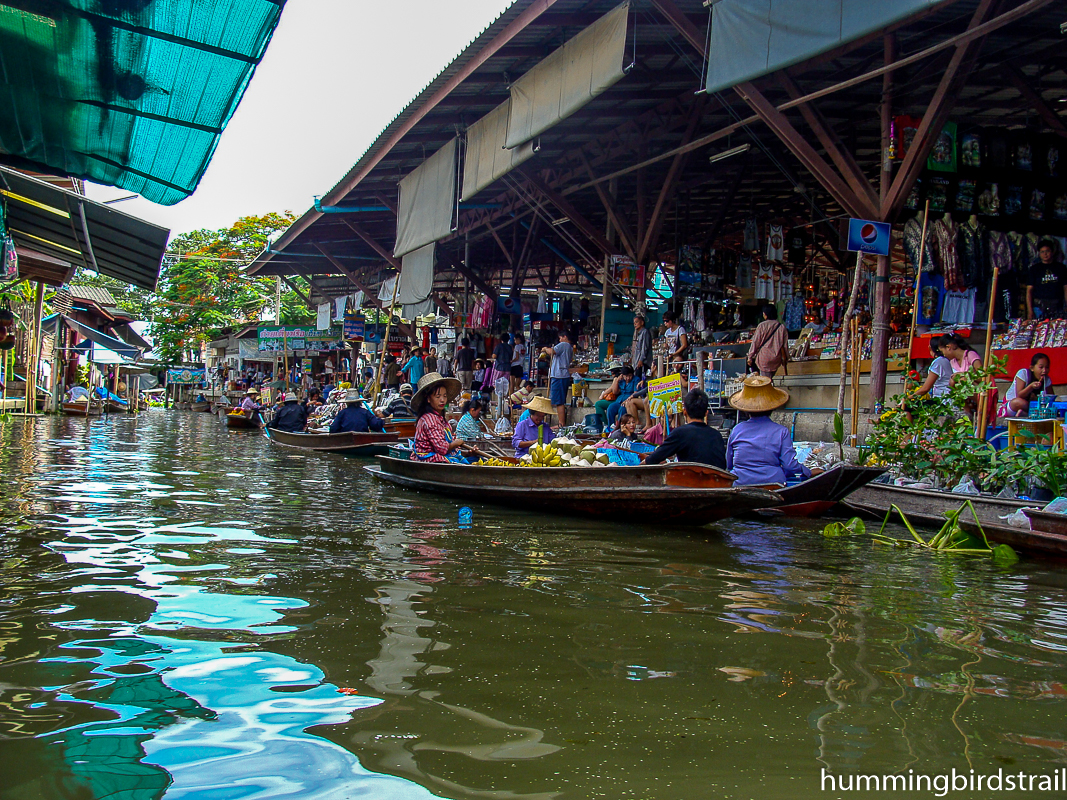
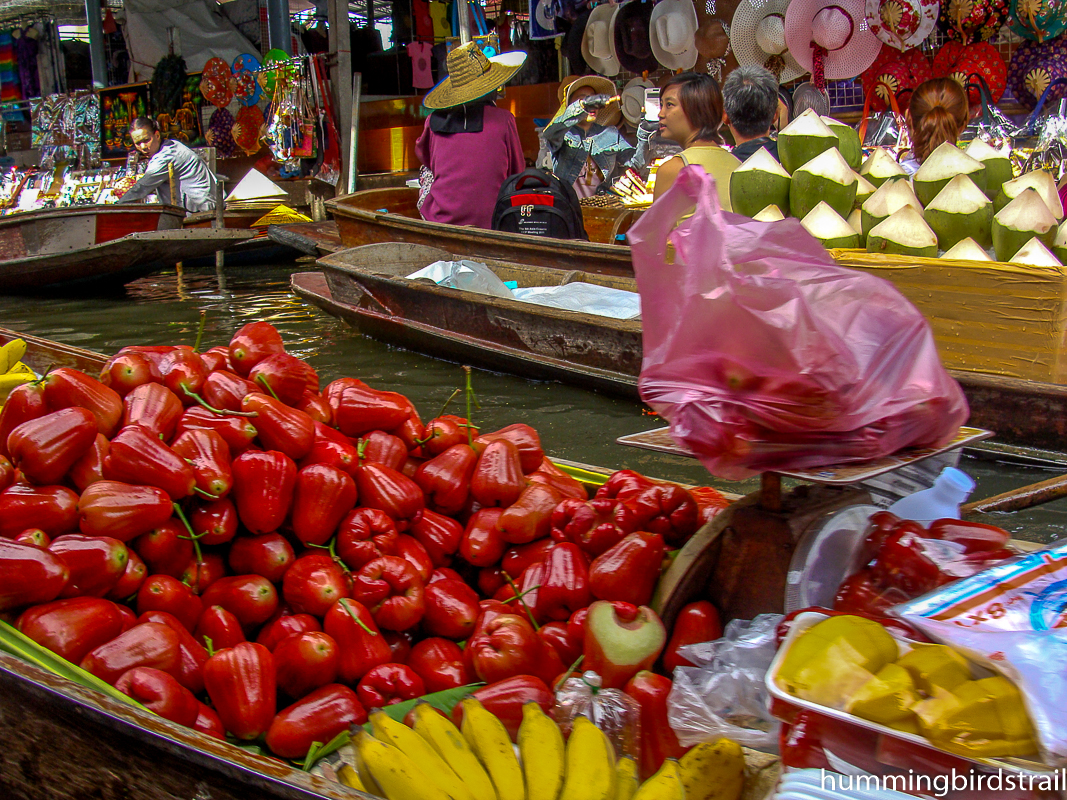
We drank fresh coconut water and ate palm sugar on board and they tasted heavenly. Soon, we came up to the most attractive and famous food sellers; needless to say, it was of course the boat noodles or Kway Teow Reua. Though we didn’t indulge in this exotic experience, for all beef and pork eaters out there, the broth is heavenly concoction, with a rich aroma, simmered to perfection!
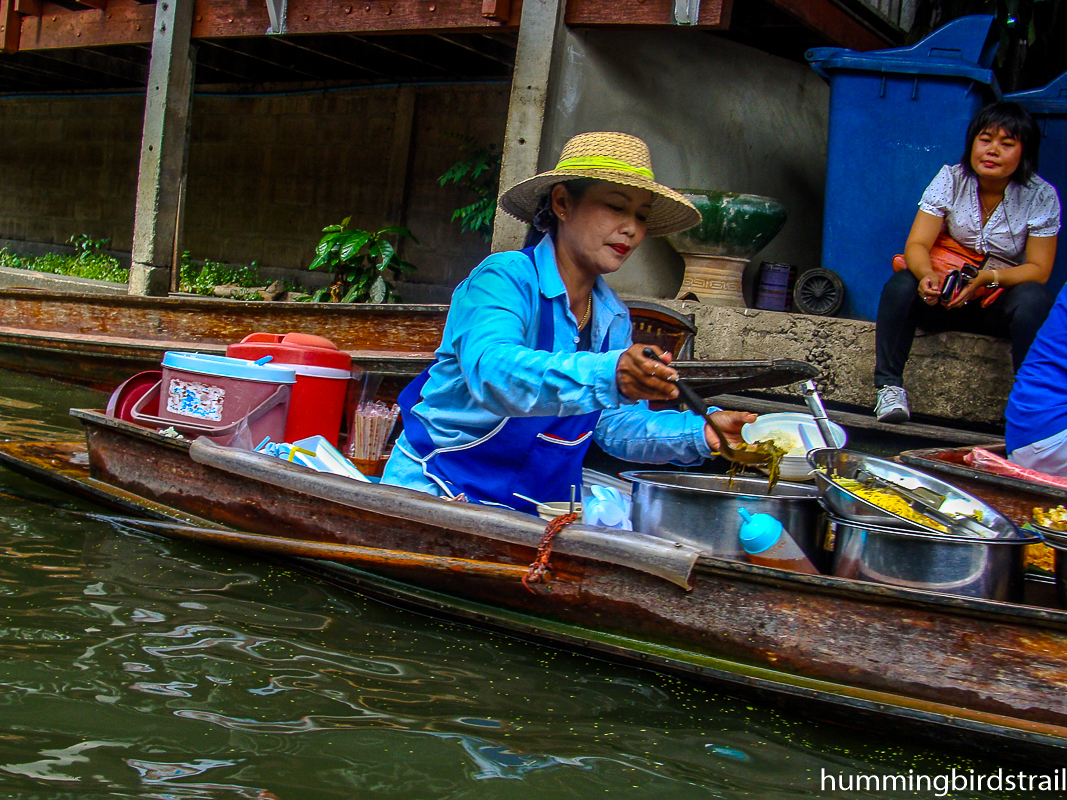
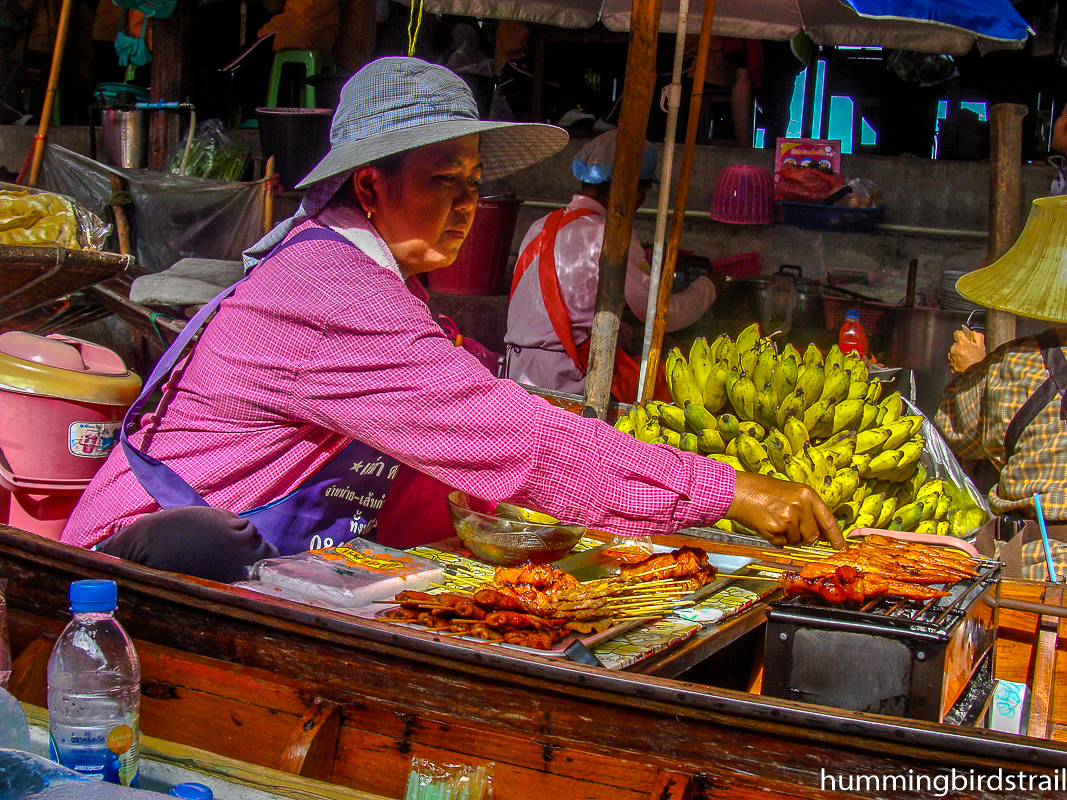
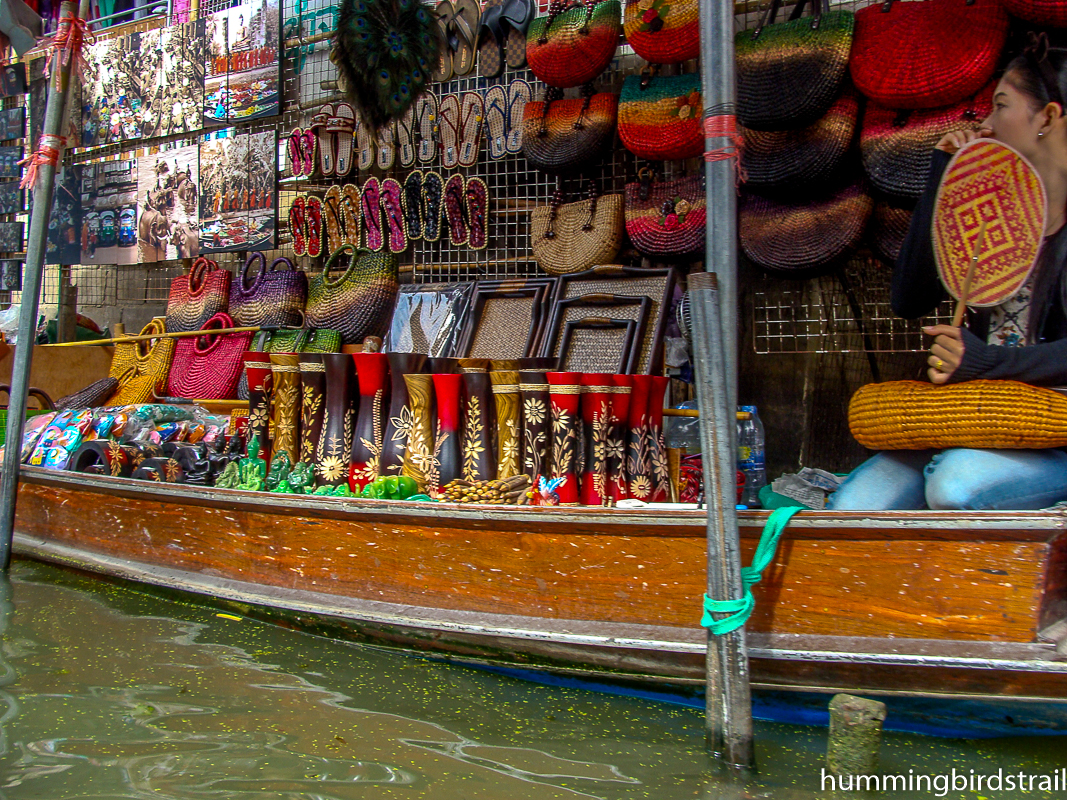
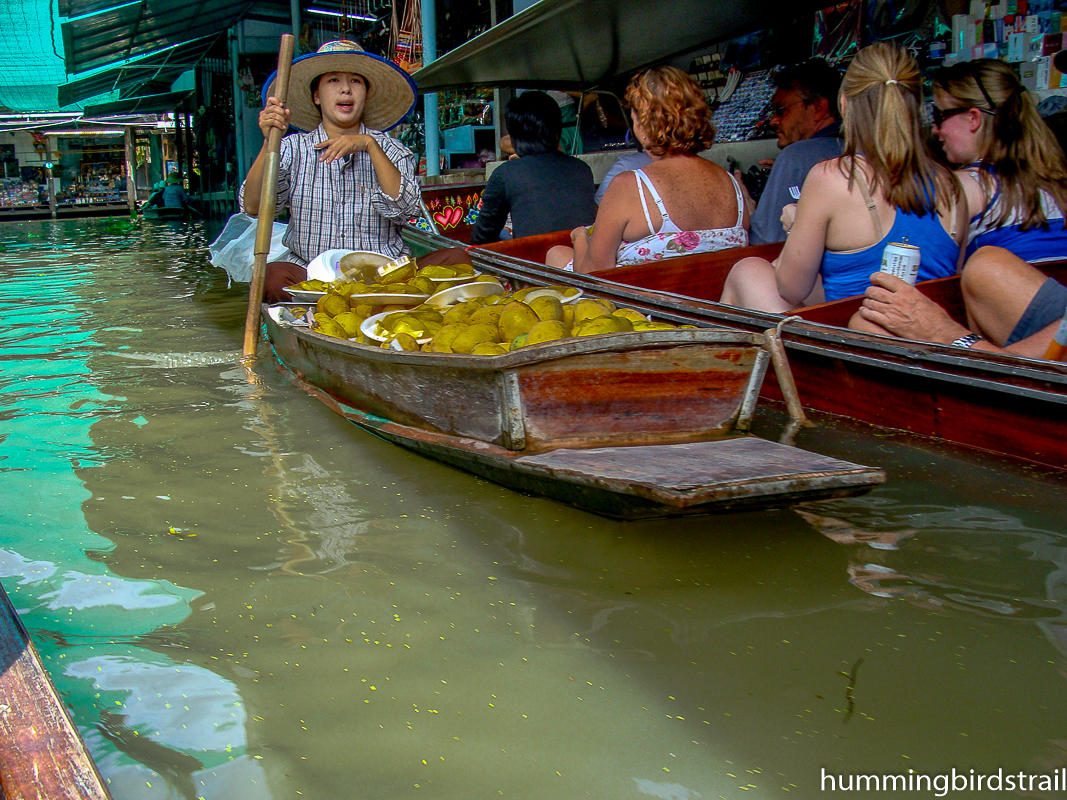
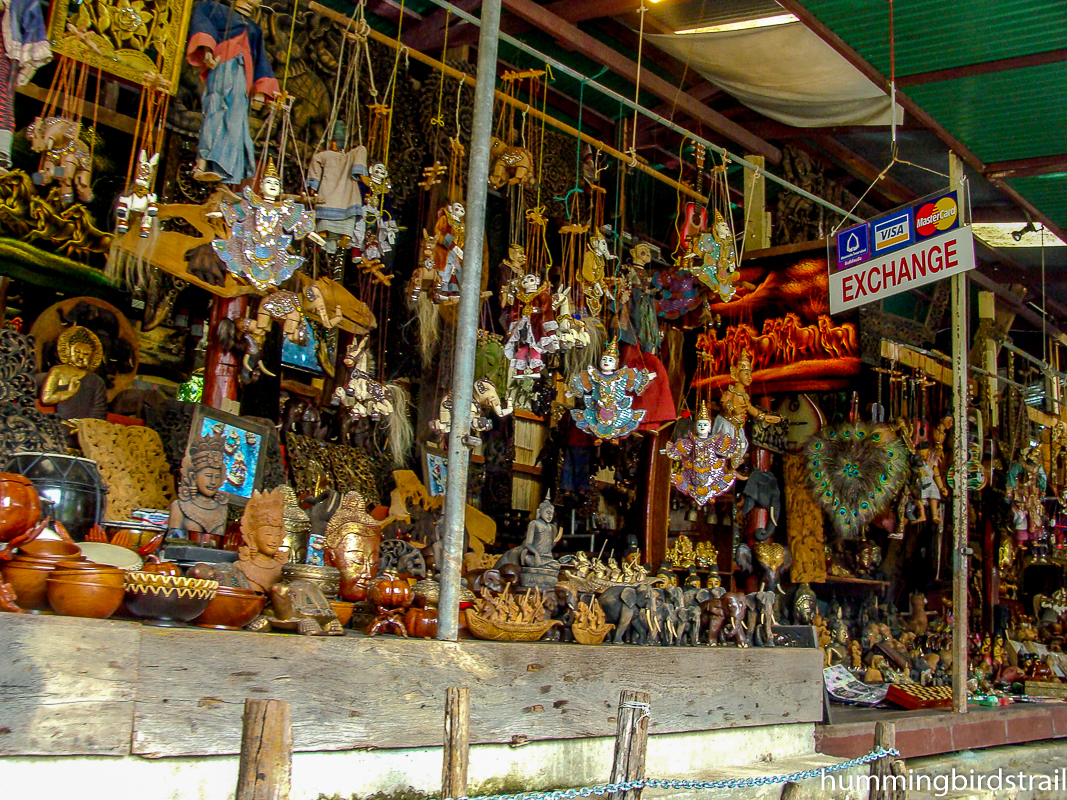
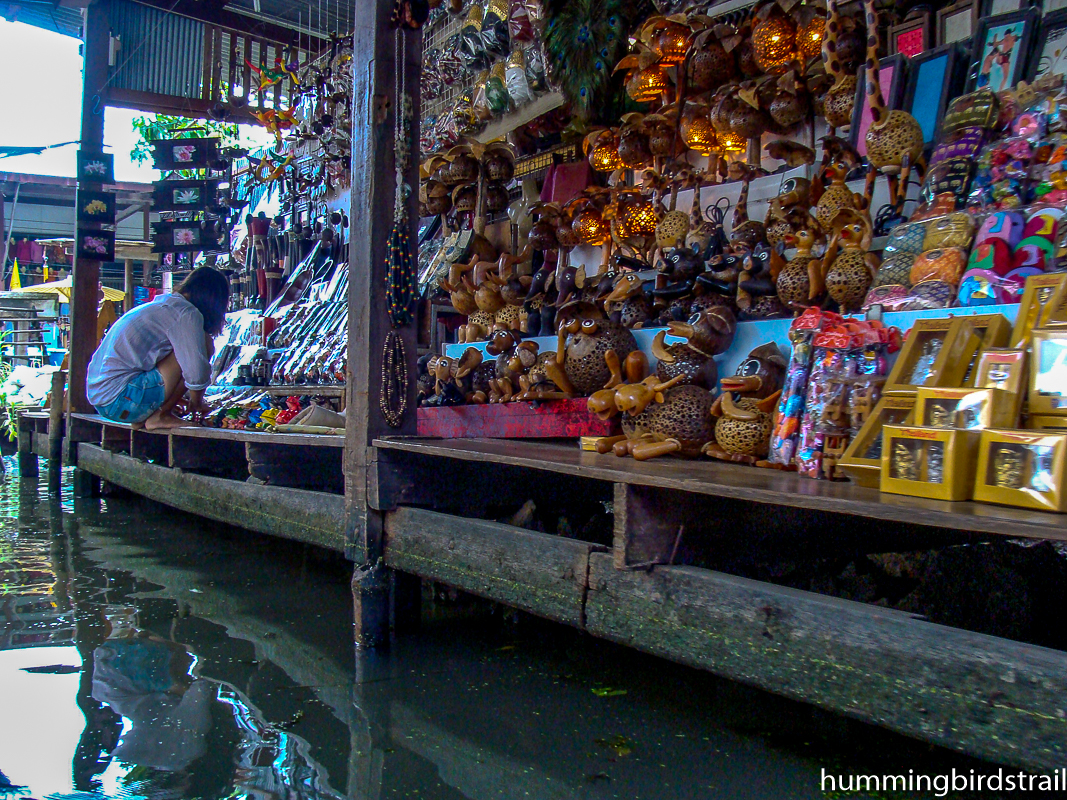
The shops along the canals also offered the same goods, as on the boats, but what caught our attention was the stall that housed giant pythons, and other slithering friends, just in case you wanted to get an awe-inspiring shot with an albino python draped carelessly around your shoulders!!! The guy and the woman had put out a board on the table that read: “Photo Snake”. The prospect was tantalising and horrific in equal measures, and we couldn’t muster the guts to have this cute guy snapped with us.
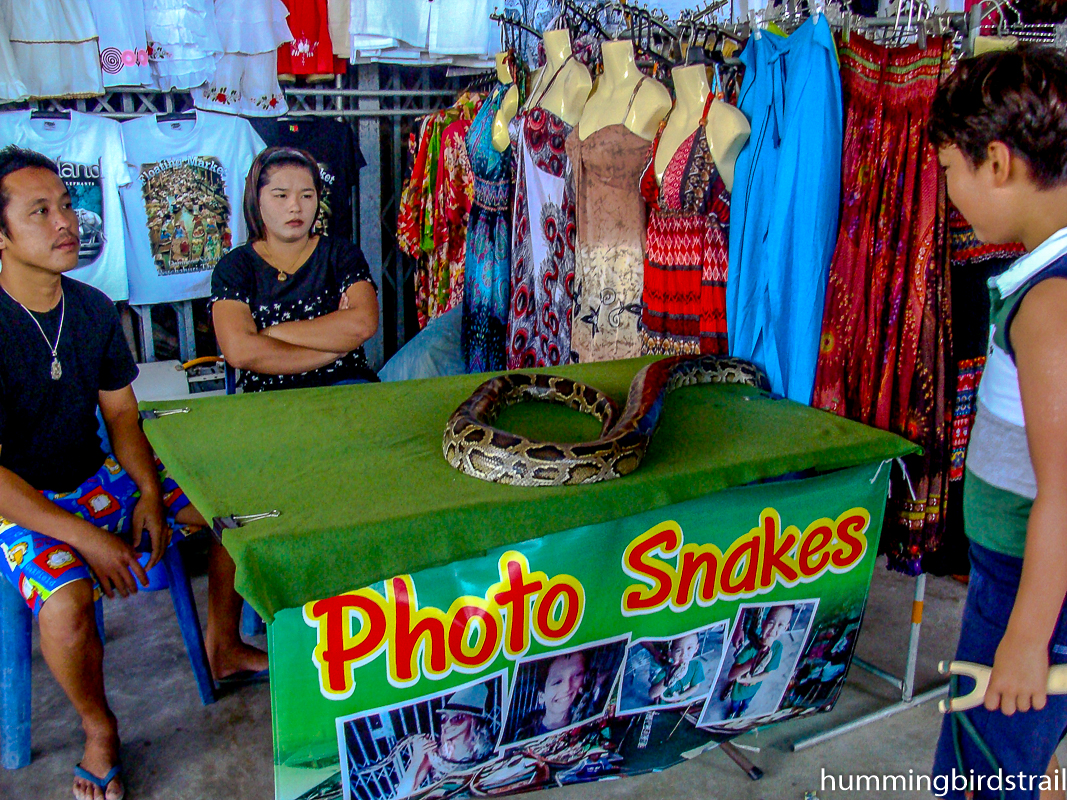
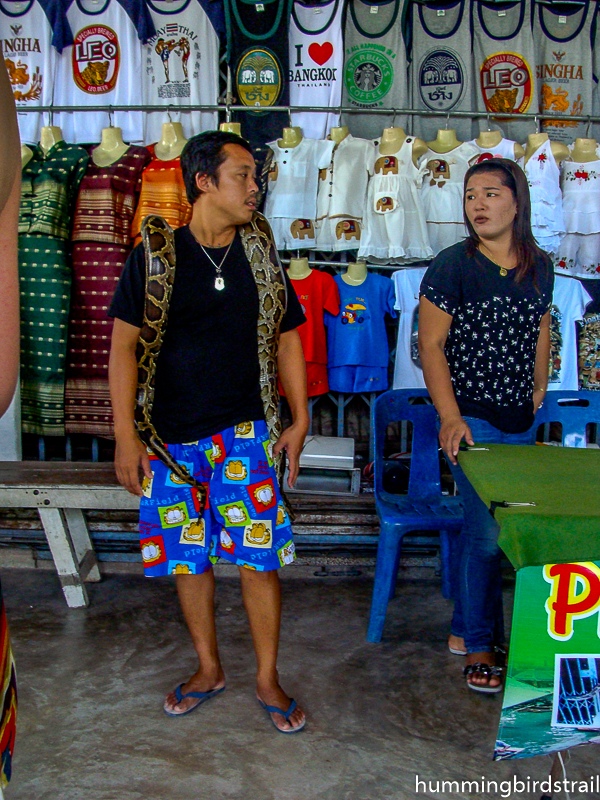
To sum up our experiences at the Floating Market, it was a weird mixture of pangs of regret that maybe, we were being witnesses to the last vestiges of a bygone legacy, and equal amounts of pleasure, that we had finally made it around the place, and were leaving with a hope that more people from around the world would jump in to save these legacies.
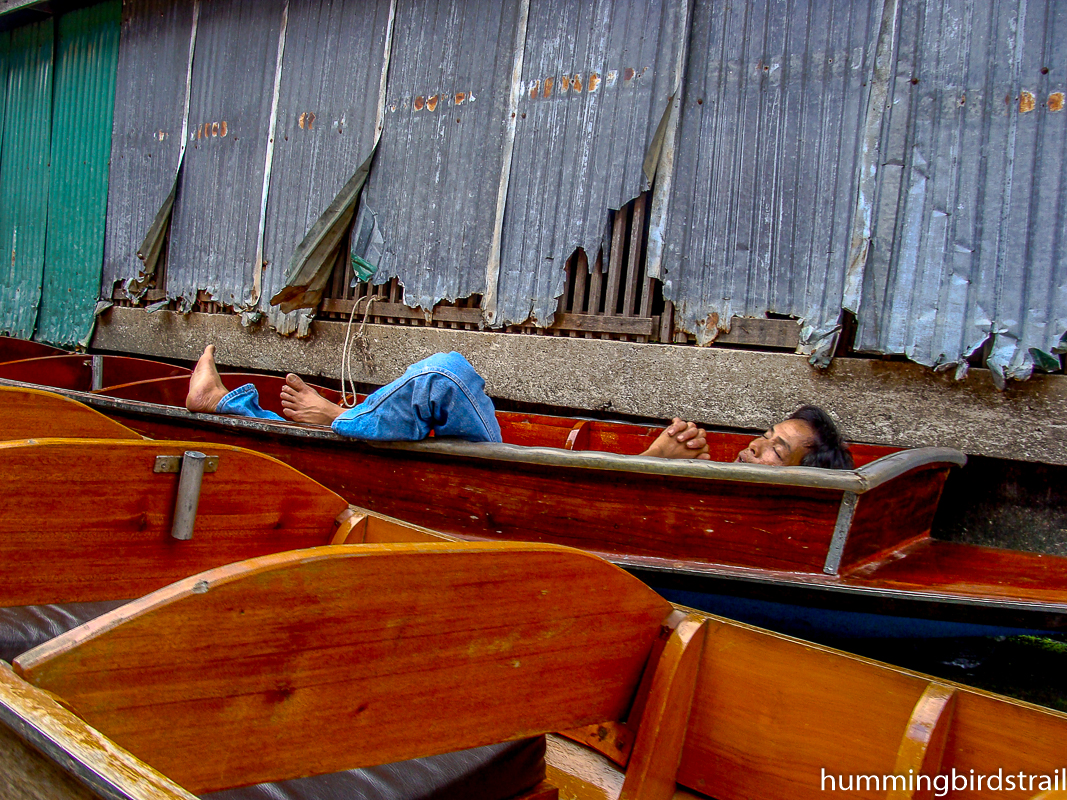
Our next stop was the notorious Death Railway and the Bridge on the river Kwai, located in the Kanchanaburi province of Thailand, more than 100 km away from this place.
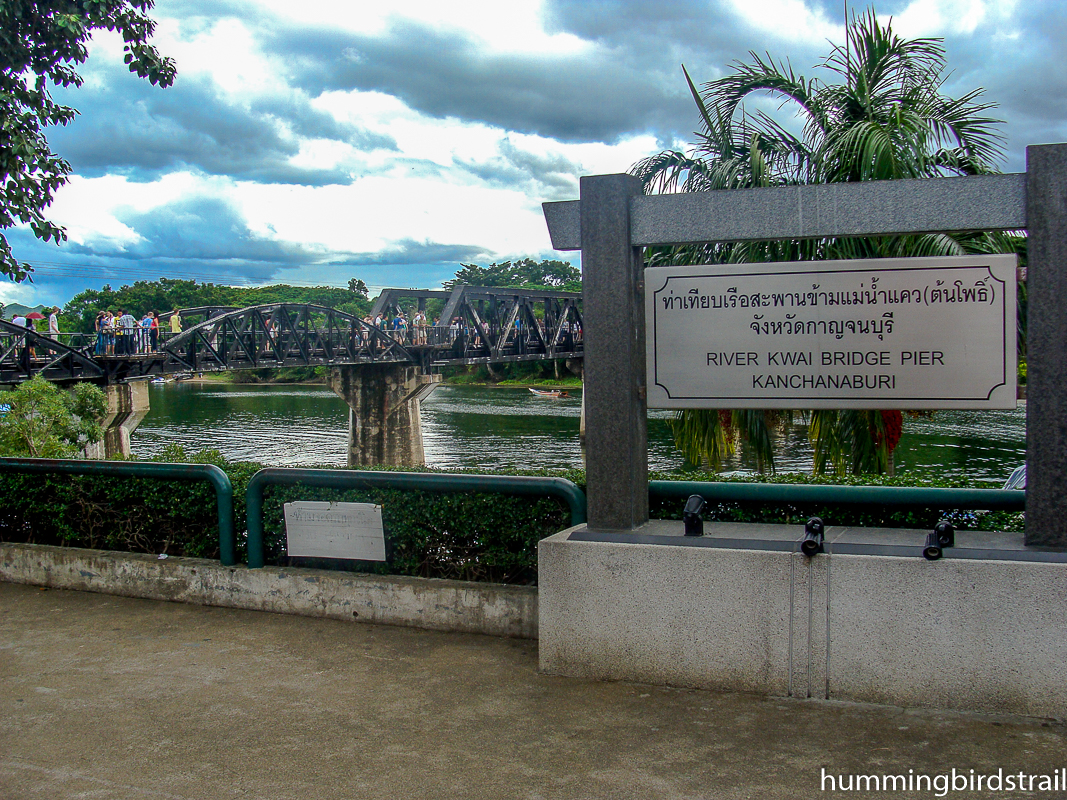
Somehow, Thailand seemed to be strewn with memoirs of golden-age Hollywood productions. David Lean had immortalised this bridge in his eponymous war drama, featuring Alec Guinness, in one of their six famous collaborations. It was ironic how the Great War that has been the most wide-spread man-made disaster till date, has been immortalised through all forms of arts and literature!
Siam-Burma Railway, infamously the Death Railway was built by the empire of Japan during the Second World War to support Japanese army in their Burma Campaign, and the Bridge on the River Kwai was a part of it.
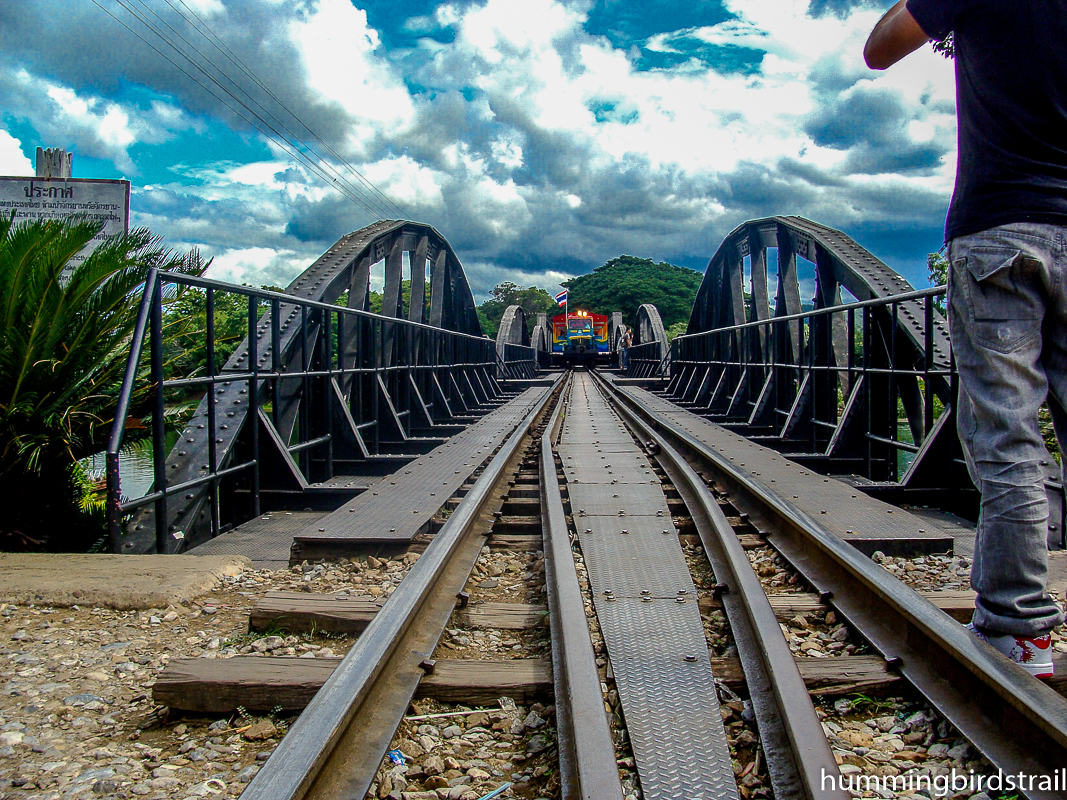
The name of Death Railway came about as more than 90000 labours and 16000 allied prisoners died during construction of this horrific 415-kilometre long pass, connecting Ban Pong in Thailand and Thanbyuzayat in Burma. Most deaths occurred due to extremely working conditions, severe malnourishment, harsh punishments and starvation. The horrific situation at the site, has been described by ex POW John Coast in his book Railroad of Death.
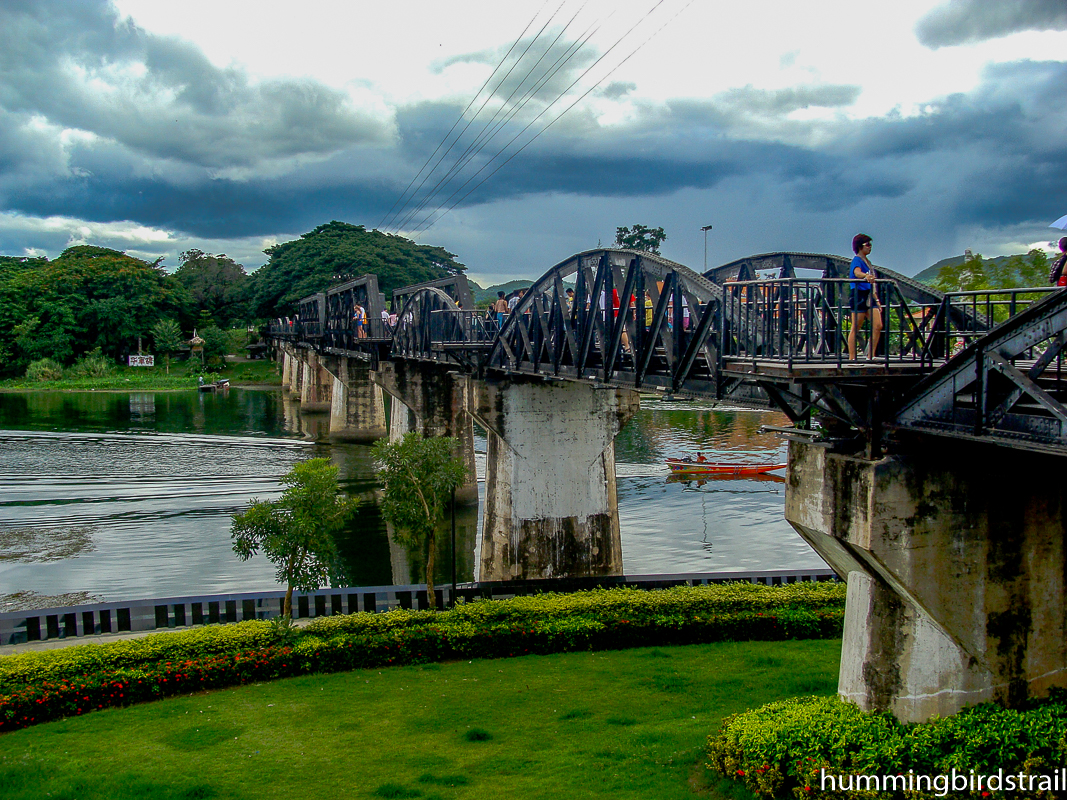
As we stood before the War Memorial, we solemnly felt the sighs of the thousands who had died on this unfortunate spot. The plaque, though written in Japanese, reads something along the lines of “In remembrance, and for comfort to the souls of those labourers and prisoners who unfortunately lost their lives building this Railway”.
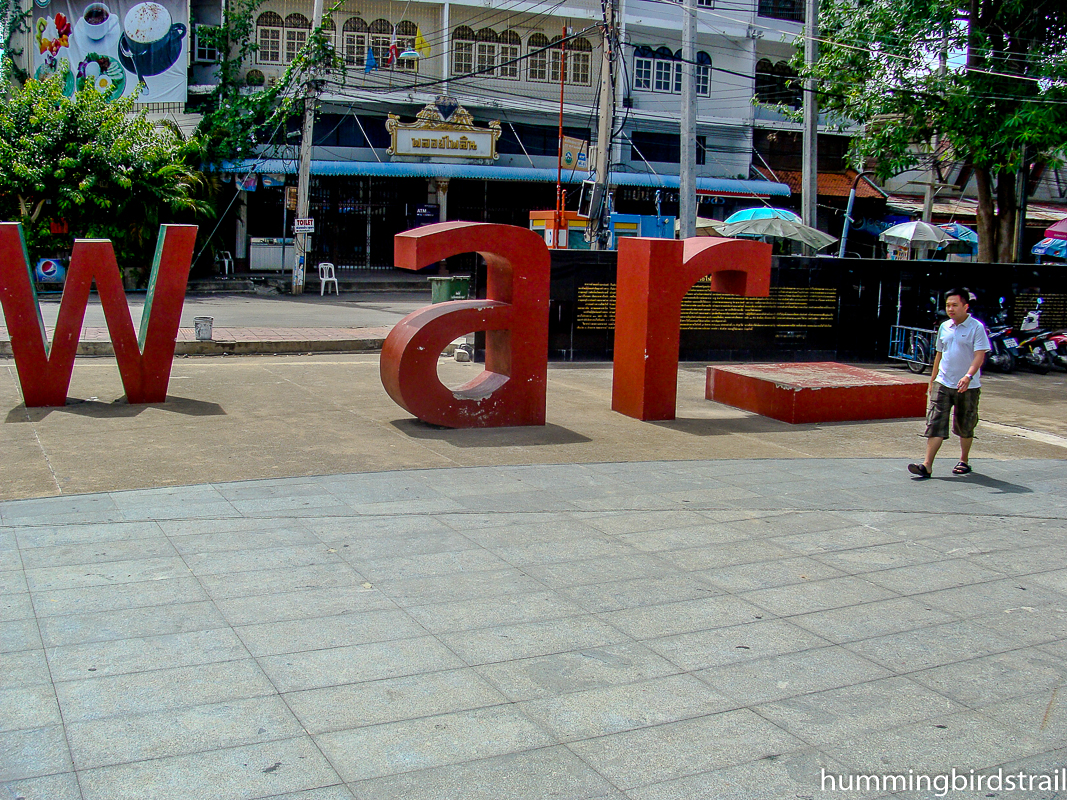
The bridge lay right ahead of us; the place was very beautiful and silent. We trudged along the bridge with our minds filled with a strange sadness remembering the cost of lives paid to erect this railway and the bridge. It felt like the silence hung heavier than the millions of unsaid words, thousands of unfinished dreams, and shattered hopes of all whose lives had painfully and untimely been snatched away. There is a train, which you can board and it will take you through the beautiful landscape of the area, but the poignancy of the place was best experienced in solitude, like we did.
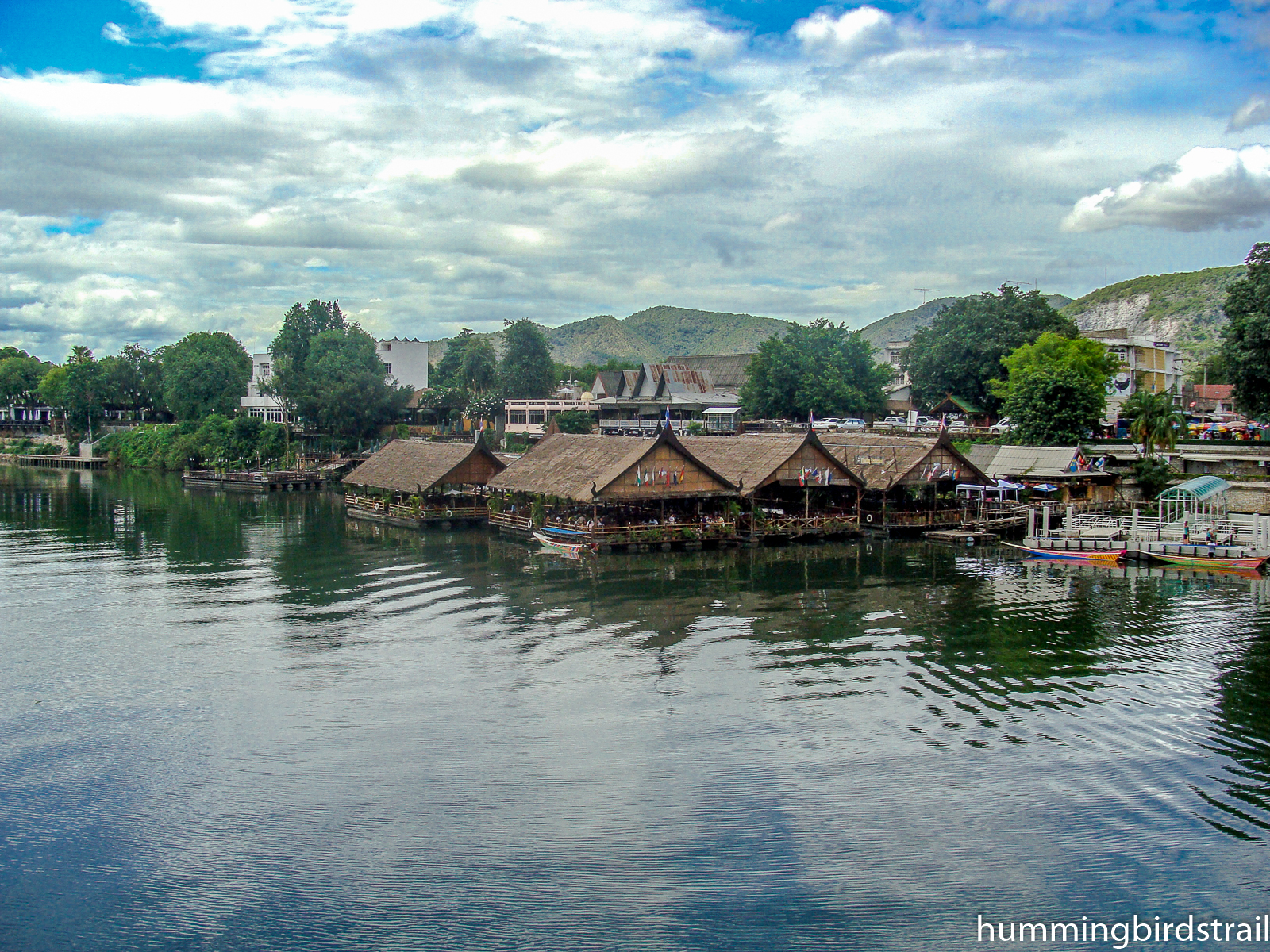
Even as we arrived back in Bangkok, it seemed like we had left a portion of us still standing by the bridge, remembering…..
